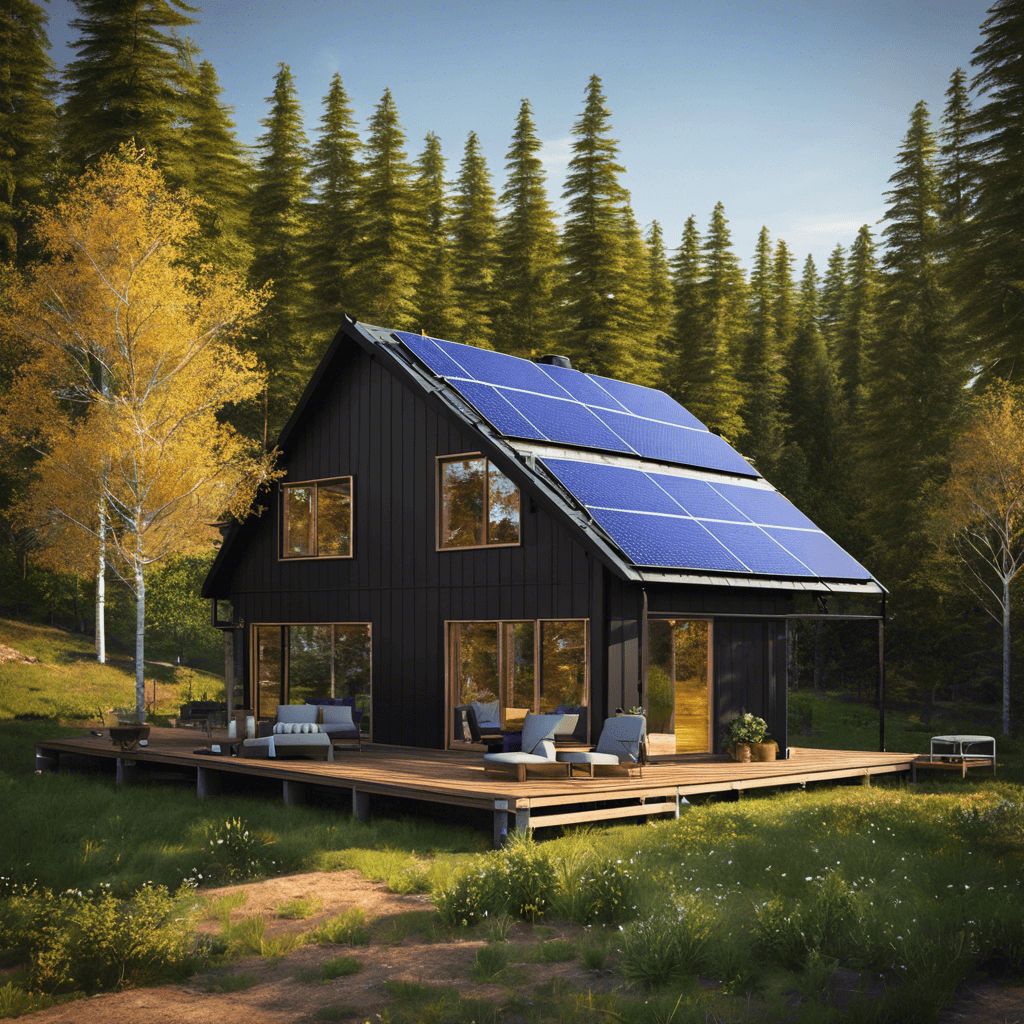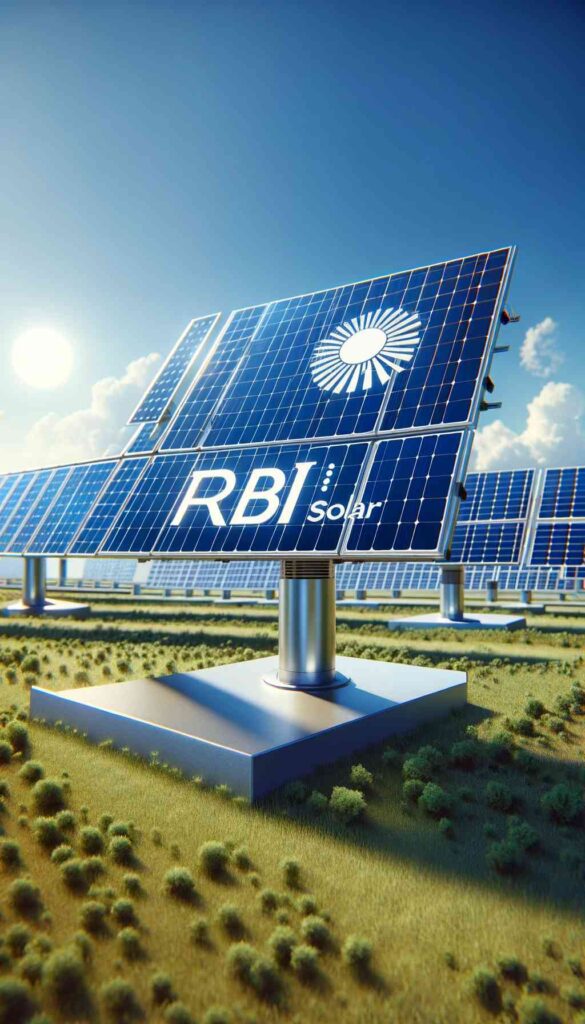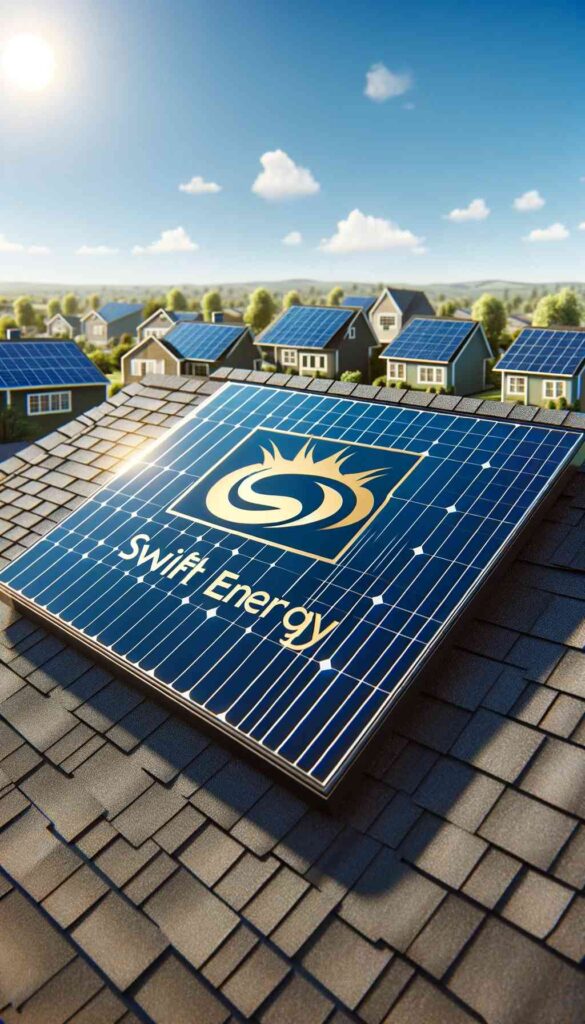
Key Takeaways
- Off-grid living with solar power offers independence from utility companies, reducing reliance on traditional energy sources.
- Solar panels are the primary component of an off-grid system, and selecting the right type is essential for efficiency.
- Batteries store energy for use when the sun isn’t shining, making them essential for a reliable solar power system.
- Inverters are needed to convert solar energy into usable electricity for your home appliances.
- Proper planning and installation are key to setting up a successful off-grid solar system.
The Rising Appeal of Solar Power for Off-Grid Living
Living off-grid is becoming increasingly popular as more people seek independence from traditional utility companies. The idea of generating your own electricity and living sustainably is appealing to many. Solar power plays a significant role in this lifestyle, offering a renewable energy source that can power your home without relying on external grids.
Why More People Choose Off-Grid Living
Many are drawn to off-grid living for its promise of self-sufficiency and sustainability. This lifestyle allows individuals to live in remote areas without sacrificing modern conveniences. By using solar power, you can reduce your carbon footprint and contribute to a healthier planet. Plus, the unpredictability of utility prices and the desire for a more independent lifestyle are strong motivators for making the switch.
Benefits of Solar Power in Decentralized Living
Solar power provides numerous advantages for those living off the grid. First, it offers energy independence, freeing you from fluctuating utility costs and potential power outages. Second, solar energy is renewable and abundant, especially in sunny regions, making it a reliable source of power for your home. Finally, advances in solar technology have made systems more efficient and affordable, making it easier than ever to transition to solar power.
Components of Off-Grid Solar Systems
To effectively harness the sun’s energy, an off-grid solar system requires several key components. Understanding each element is important for setting up a reliable and efficient power system. The main components include solar panels, batteries, and inverters. Each plays a vital role in converting sunlight into usable electricity and ensuring power is available when needed.
Solar Panels: Types and Efficiency
Solar panels are the heart of any off-grid system. They capture sunlight and convert it into electricity. When choosing solar panels, it’s important to consider the type and efficiency. There are three main types of solar panels: monocrystalline, polycrystalline, and thin-film. Monocrystalline panels are known for their high efficiency and long lifespan, making them a popular choice for off-grid systems. Polycrystalline panels are slightly less efficient but more affordable, while thin-film panels are lightweight and flexible, ideal for unique installations.
The efficiency of a solar panel is determined by how well it converts sunlight into electricity. Higher efficiency panels produce more power in less space, which is essential for off-grid systems with limited roof space. When selecting panels, consider your energy needs and the available installation area to ensure you choose the right type and size for your system.
Batteries for Energy Storage
Batteries are essential for storing solar energy for use when the sun isn’t shining. They ensure a continuous power supply, even during cloudy days or at night. There are several types of batteries available, including lead-acid, lithium-ion, and saltwater batteries. Each has its pros and cons, so it’s important to choose the right one based on your energy needs, budget, and environmental conditions.
Lead-acid batteries are the most common and affordable option, but they have a shorter lifespan and lower efficiency compared to lithium-ion batteries. Lithium-ion batteries are more expensive but offer longer lifespans and higher efficiency, making them a popular choice for off-grid systems. Saltwater batteries are an emerging technology, offering a non-toxic and environmentally friendly option, though they are less common and can be more expensive.
Sizing Your Solar System
When planning your off-grid solar system, determining the correct size is vital. This involves calculating your energy needs and ensuring your system can meet those demands. Start by listing all the electrical appliances and devices you plan to use. Note their power ratings and estimate how long you use each item daily. This will give you an idea of your total energy consumption in kilowatt-hours (kWh).
Next, consider the amount of sunlight your location receives, as this affects the efficiency of your solar panels. Areas with more sunlight require fewer panels to produce the same amount of energy. Once you have your energy needs and solar potential figured out, you can calculate the number of panels required to meet your daily consumption. Remember to include a buffer for cloudy days or increased energy use in the future.
Installation Basics You Need to Know
Installing an off-grid solar system can seem daunting, but with proper planning, it becomes manageable. Begin by selecting a suitable location for your solar panels. Ideally, this should be a spot with maximum sun exposure throughout the day, such as a south-facing roof or an open field.
Next, ensure your mounting system is secure and can withstand local weather conditions. Properly secure the panels to prevent damage from wind or storms. Connect the panels to your inverter and batteries according to the manufacturer’s instructions, ensuring all connections are tight and weatherproof. If you’re not confident in your abilities, consider hiring a professional installer to ensure everything is set up correctly and safely.

Overcoming Challenges in Off-Grid Solar Living
Living off-grid with solar power presents unique challenges, but with the right strategies, you can overcome them and enjoy a reliable power supply. Understanding these challenges and planning for them is key to a successful off-grid lifestyle.
Weather Consistency and Solar Power
One of the primary challenges of off-grid solar living is weather inconsistency. Overcast days, rain, and snow can reduce the amount of sunlight reaching your panels, impacting energy production. To mitigate this, consider installing additional panels to compensate for lower output during bad weather.
Besides installing additional panels, having a robust battery storage system ensures you have power even when solar production is low. A generator can also serve as a backup power source during prolonged periods of unfavorable weather.
Maintaining System Efficiency
To keep your solar system running efficiently, regular maintenance is essential. Clean your solar panels periodically to remove dust, leaves, and snow that can obstruct sunlight. Inspect your system’s components, such as wiring and connections, for signs of wear or damage.
Monitor your energy consumption and adjust your usage patterns if necessary. Using energy-efficient appliances and LED lighting can significantly reduce your overall power needs, allowing your solar system to operate more efficiently.
Backup Power Options
While solar power is a reliable energy source, having a backup plan is wise. Generators are a popular choice for providing power during periods of low solar production or system maintenance. They can run on various fuels, such as gasoline, diesel, or propane.
Another option is to integrate a wind turbine or micro-hydro system into your energy setup. These renewable sources can complement solar power, especially in areas with consistent wind or flowing water. By diversifying your energy sources, you can ensure a continuous power supply regardless of weather conditions.
Successful Off-Grid Communities
There are numerous examples of successful off-grid communities worldwide. These communities have embraced solar power and other renewable energy sources to achieve energy independence and sustainability. By learning from their experiences, you can gain valuable insights into creating your own off-grid lifestyle.
Small Homesteads Utilizing Solar Power
Many small homesteads have successfully transitioned to off-grid living with solar power. These homesteaders prioritize energy efficiency and sustainability, often using solar panels in combination with wind turbines or micro-hydro systems. By adopting a minimalist lifestyle and reducing energy consumption, they can maintain a comfortable living environment without relying on external power sources.
Off-Grid Sustainable Communities
Larger off-grid communities often combine solar power with other renewable energy sources, such as wind and biomass, to create a diverse energy mix. These communities emphasize collaboration and resource-sharing to minimize their environmental impact and maximize energy efficiency. By working together, they can achieve a high level of self-sufficiency and sustainability, serving as a model for future off-grid developments.
Overall, living off-grid with solar power is an achievable and rewarding goal. By understanding the components, planning your system, and learning from successful examples, you can create a sustainable and independent lifestyle that benefits both you and the environment.

The Future of Solar Power in Off-Grid Living
The future of solar power in off-grid living is bright and promising. As technology continues to advance, solar systems are becoming more efficient, affordable, and accessible. This trend is making it easier for individuals and communities to transition to off-grid living, reducing their reliance on traditional energy sources and minimizing their environmental impact.
Innovations in Solar Technology
Recent innovations in solar technology are transforming the way we harness and utilize solar energy. High-efficiency solar panels are now capable of capturing more sunlight and converting it into electricity, even in low-light conditions. This means that solar power is becoming a viable option for more people, regardless of their geographic location.
In addition to panel efficiency, advancements in battery technology are also playing a vital role. New battery designs offer longer lifespans, greater storage capacities, and faster charging times, making them more reliable for off-grid applications. As these technologies continue to evolve, we can expect even greater improvements in the performance and affordability of solar systems.
Growth of Solar-Powered Communities
The rise of solar-powered communities is another exciting development in the world of off-grid living. These communities are built around the principles of sustainability and self-sufficiency, using solar power as their primary energy source. By working together, residents can share resources, knowledge, and expertise, creating a supportive environment for off-grid living.
As more people become aware of the benefits of solar power and off-grid living, we can expect to see an increase in the number of solar-powered communities. These communities serve as a model for sustainable living, demonstrating that it is possible to live comfortably and responsibly without relying on traditional energy sources.

Frequently Asked Questions
Is solar power reliable for off-grid living?
Yes, solar power is a reliable energy source for off-grid living. With advancements in solar panel and battery technology, solar systems can provide consistent and dependable power, even in less-than-ideal weather conditions. Proper planning and system sizing are essential to ensure that your solar setup meets your energy needs.
By incorporating backup power options, such as generators or alternative renewable sources, you can further enhance the reliability of your off-grid solar system.
How costly is it to set up an off-grid solar system?
The cost of setting up an off-grid solar system can vary widely depending on factors such as system size, location, and the specific components chosen. On average, a complete off-grid solar system can cost anywhere from $10,000 to $30,000 or more. This includes solar panels, batteries, inverters, and installation costs.
While the initial investment may seem high, it’s important to consider the long-term savings on utility bills and the environmental benefits of using renewable energy. Government incentives and rebates can also help offset some of the costs associated with installing a solar system.
Is it worth going off-grid with solar?
For many, going off-grid with solar is a worthwhile investment. The benefits of energy independence, reduced utility bills, and a smaller carbon footprint make it an attractive option for those seeking a sustainable lifestyle. Living off-grid can provide a sense of freedom and self-reliance that is hard to achieve with traditional energy sources.
How much battery storage do I need to go off-grid?
The amount of battery storage needed for off-grid living depends on your energy consumption and the size of your solar system. A general rule of thumb is to have enough battery capacity to store at least one to two days’ worth of energy consumption. This ensures that you have a reliable power supply even during periods of low solar production.
To determine your specific battery storage needs, calculate your daily energy consumption in kilowatt-hours (kWh) and consider factors such as your location’s sunlight availability and weather patterns. Consulting with a solar professional can help you design a system that meets your unique requirements.


